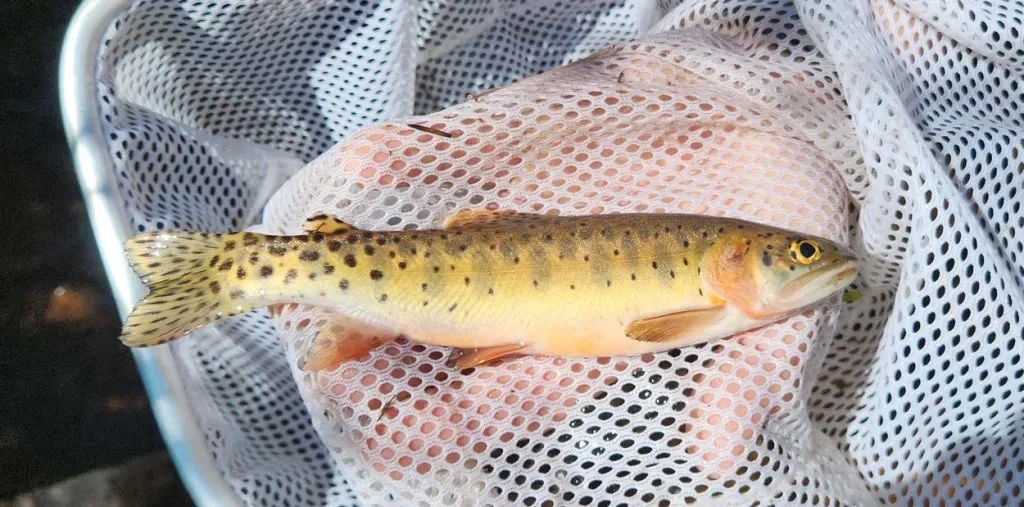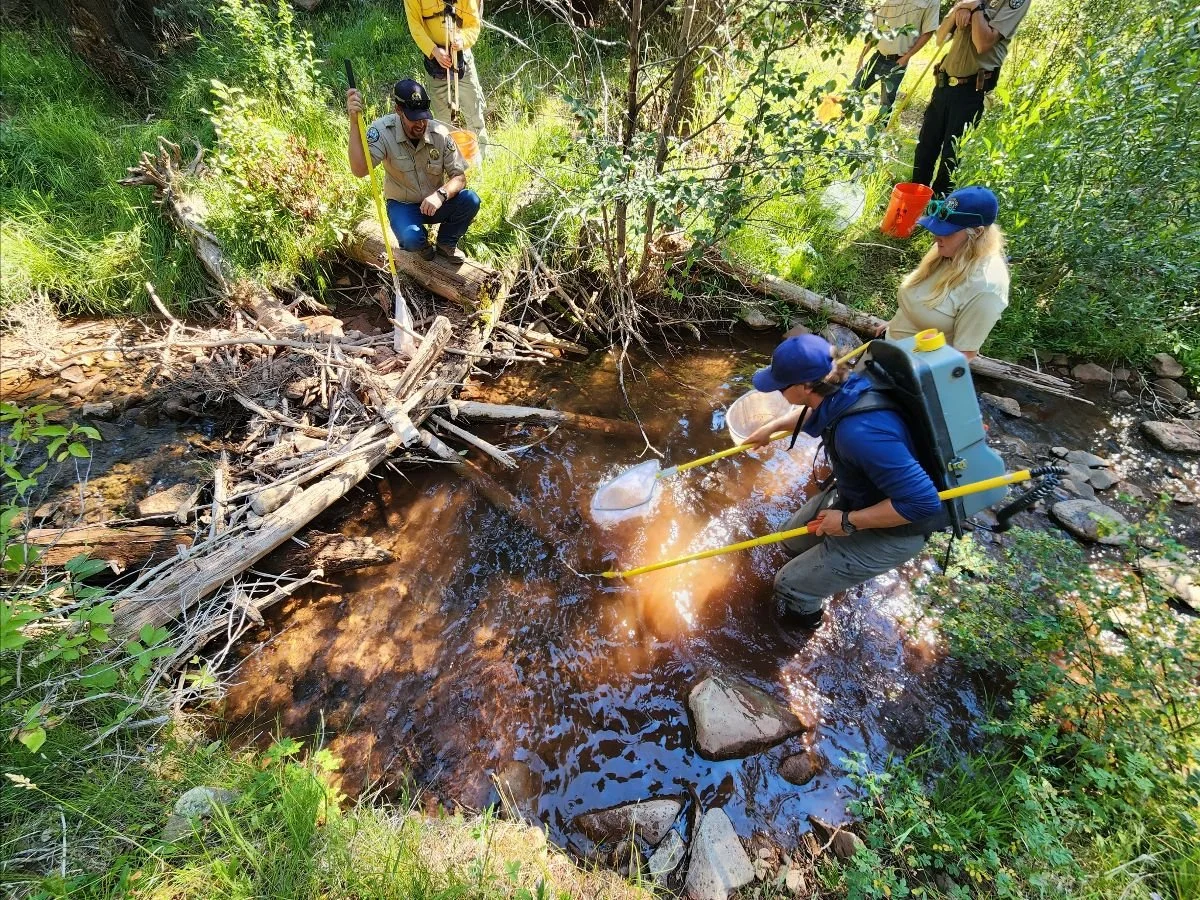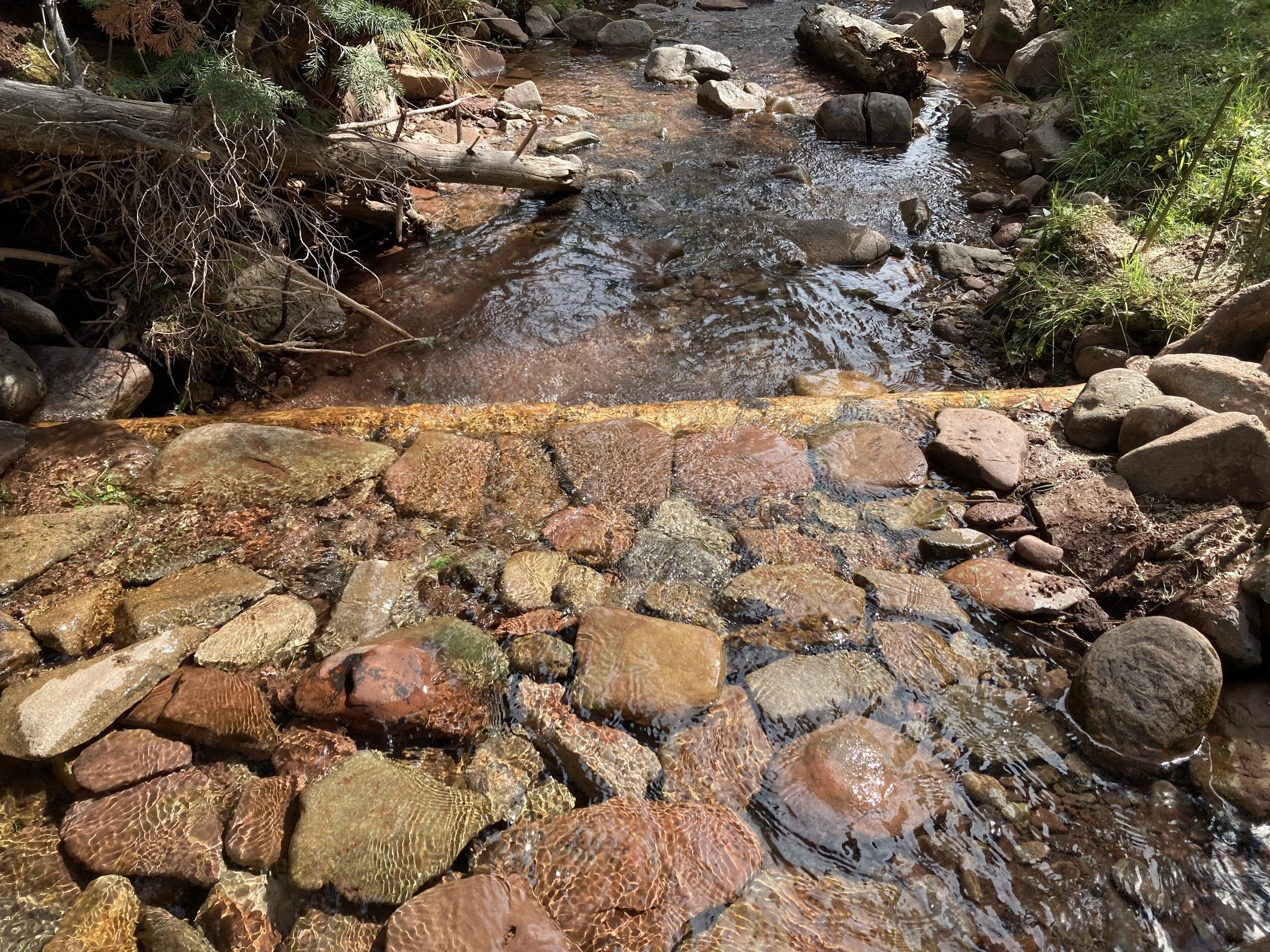A "green lineage" Colorado River cutthroat trout pictured in a net after it was rescued from Wildcat Creek during the Stoner Mesa Fire on Aug. 11, 2025. (CPW photos)
Protecting a Unique Lineage of Colorado River Cutthroat Trout
When the Stoner Mesa Fire grew near Rico this summer, Colorado Parks and Wildlife (CPW) and the San Juan National Forest moved quickly to protect a rare natural resource. Wildcat Creek, a small tributary of the Upper Dolores River, holds a lineage of Colorado River cutthroat trout with unique DNA not found elsewhere. With the fire threatening the watershed, biologists carried out an emergency rescue to prevent the loss of this population.
The Rescue
A team of CPW biologists and wildlife managers, joined by Forest Service staff, collected the fish before the advancing fire or post-fire flooding could damage the stream. Using backpack electrofishing units, they temporarily stunned the trout so they could be netted and transferred to buckets. Buckets were carried down to the road and loaded into a hatchery truck.
CPW aquatic biologist Kade Jackson electrofishes while aquatic technician Kennedy Perry holds a net to collect fish. District Wildlife Manager Matt Sturdevant watches from the bank with another net. (CPW Photos)
By the end of the day, 266 trout had been collected and transported nearly 165 miles to the Roaring Judy Fish Hatchery near Gunnison. The fish are now being held in isolation tanks, where they will be closely monitored until conditions are stable enough to return them to the wild.
Why Wildfire Threatens Trout
Wildfire impacts fish directly through heat and fire suppression efforts, but the larger danger often comes after the flames are out. Without vegetation to stabilize streambanks, rainfall can wash ash, mud, and sediment into creeks. Spawning gravel can be smothered, eggs lost, and water quality degraded to levels that fish cannot survive. For a small and genetically unique population like the one in Wildcat Creek, the risk of losing that lineage in a single flood is very real.
Building Resilience Before the Fire
Log pour-over structures from 2023 Dolores project
The emergency response was not the first effort to protect Wildcat Creek. In 2023, Dolores River Anglers TU, Colorado Parks and Wildlife, the San Juan National Forest, and the Upper Dolores Stream Protection Working Group collaborated on a project to strengthen the creek and create better fish habitat.
They installed log pour-over structures at four sites along the stream. These structures mimic what happens naturally when a tree falls into a creek. They create deeper pools and pockets of refuge where fish can survive during periods of low water.
The project required seven days of hands-on work, with help from volunteers, Forest Service staff, and the Southwest Conservation Corps. The goal was straightforward: give this unique lineage of cutthroat trout more places to thrive. Those improvements proved valuable when fire threatened the watershed a year later.
Conservation in Context
Colorado’s native cutthroat trout face many pressures. Habitat loss, competition with non-native trout, hybridization that dilutes their DNA, and wildfire can all put small populations at risk. Emergency rescues during fire are sometimes the last line of defense. In 2018, CPW rescued the last known San Juan cutthroat trout from the 416 Fire. Hatchery propagation has since restored that lineage and created new wild populations.
The Wildcat Creek rescue follows the same principle: act quickly, protect the genetics, and create options for the future.
Next Steps
The Wildcat Creek cutthroat will remain at Roaring Judy Hatchery until the fire threat has passed and water quality in the creek can support their return. Some may be reintroduced to Wildcat Creek, while others could be used to establish populations in nearby streams where non-native trout have been removed.
Why This Matters
Every lineage of native cutthroat trout tells a part of Colorado’s ecological story. The Wildcat Creek fish represent unique DNA that connects the past to the present. Safeguarding them ensures that future generations can continue to experience wild trout that are truly native to this place.
Protecting these fish is not about a single rescue. It is about building healthy streams, responding when emergencies strike, and working together across agencies and communities to preserve Colorado’s natural heritage.






